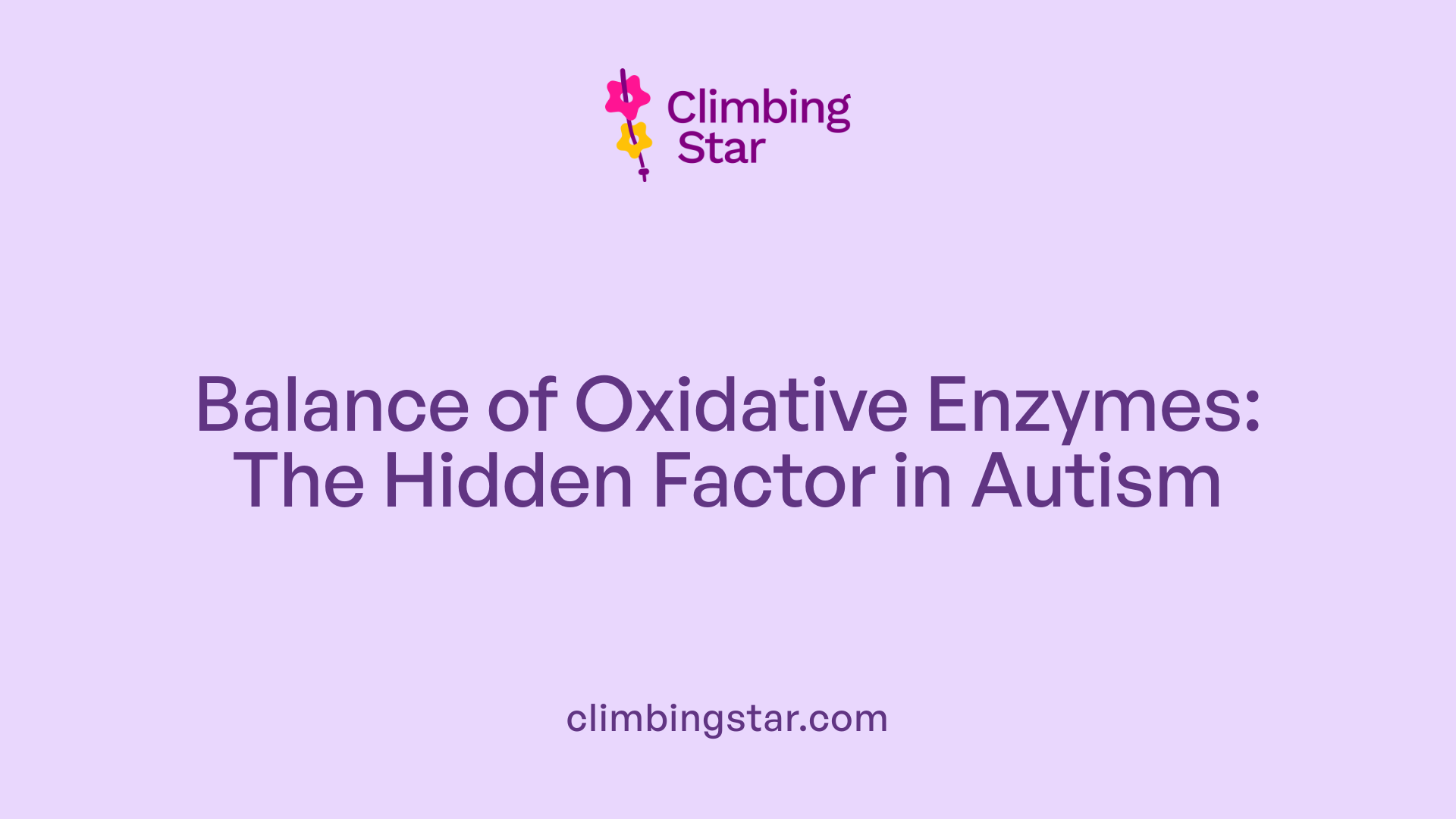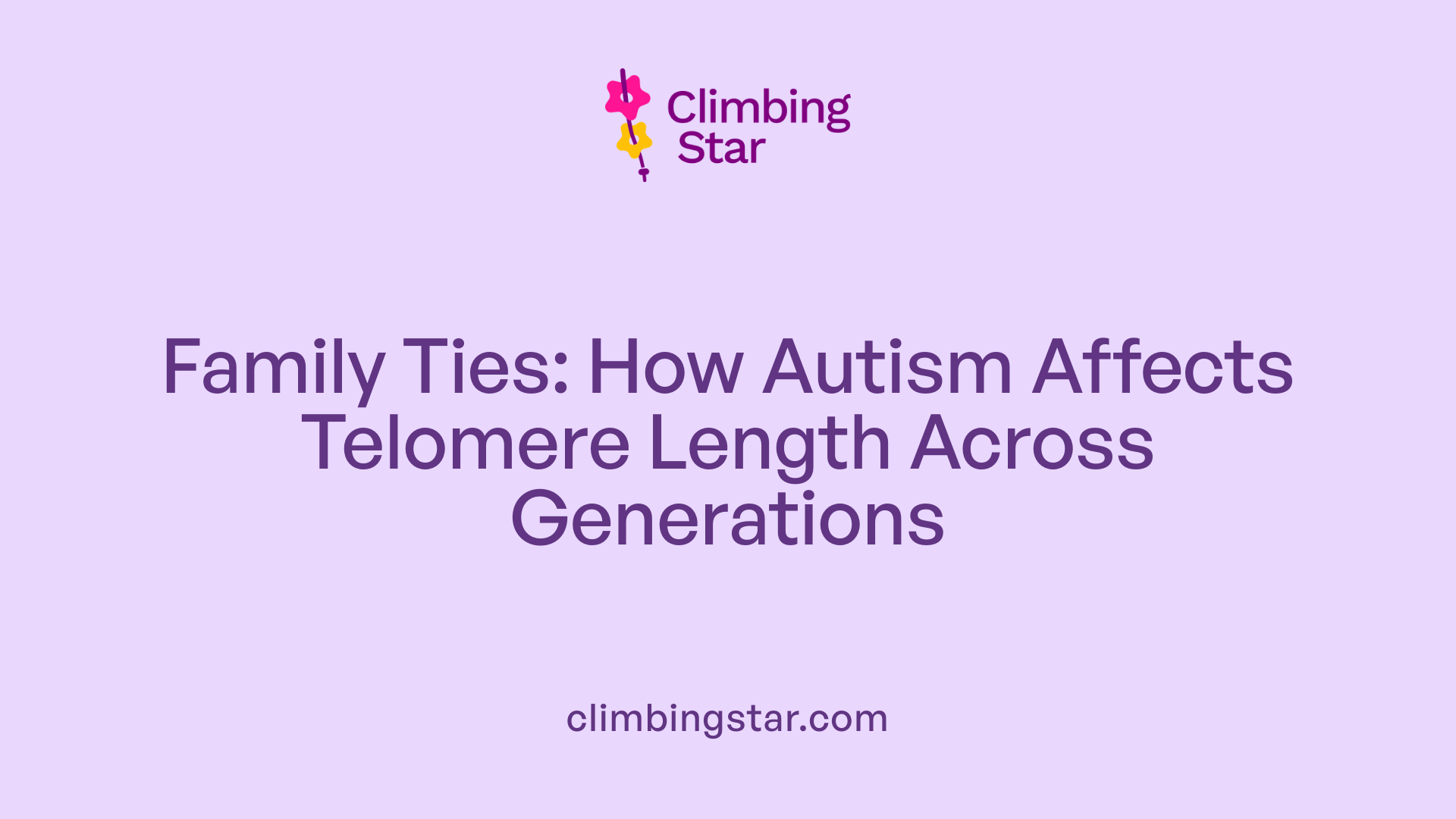Understanding the Intersection of Genetics and Behavior in Autism
Autism spectrum disorder (ASD) presents complex challenges influenced by both genetic and environmental factors. Emerging research reveals that biological markers, such as telomere length, might not only aid in understanding ASD's underlying mechanisms but also potentially serve as indicators of risk and prognosis. This article navigates the connection between telomere biology and autism, alongside a deep dive into behavioral analysis therapy — the frontline intervention for ASD — to provide a holistic overview for families, clinicians, and researchers alike.
What Are Telomeres and Why Do They Matter for Autism?

What Are Telomeres?
Telomeres are repetitive DNA sequences located at the ends of chromosomes. They act like protective caps that prevent chromosomes from deteriorating or fusing with neighboring chromosomes during cell division. Over time, as cells divide repeatedly, telomeres naturally shorten, which is considered a marker of cellular aging and biological stress.
Telomere Length as a Biomarker
Telomere length (TL) has gained attention as a biomarker because it can reflect an individual’s biological exposure to stress and aging processes at the molecular level. Shortened TL has been linked to various health risks and chronic conditions, highlighting its potential significance beyond genetics.
Telomere Shortening in Children with Autism Spectrum Disorder
Research shows that children diagnosed with autism spectrum disorder (ASD) have significantly shorter telomeres in their peripheral blood leukocytes compared to typically developing peers. This suggests that telomere shortening may be involved in or reflect the biological underpinnings of ASD. Shorter TL in these children may indicate increased cellular stress or accelerated biological aging associated with ASD’s pathophysiology.
Furthermore, telomere shortening is consistently observed not only in ASD-affected children but also in family members, including infants and mothers within high-risk ASD families, pointing to a familial or environmental stress component linked to ASD.
What is the significance of telomere length in autism?
Telomere length serves as an important indicator by showing that children with ASD may experience greater biological stress or aging processes. Since telomeres protect chromosome integrity, their shortening can have significant implications for cellular health and function, potentially influencing neurological development and ASD manifestation. Monitoring TL could help identify biological markers for early ASD detection or targeted interventions.
Linking Shortened Telomeres to Increased Autism Risk

How is telomere length associated with autism risk?
Research demonstrates a significant association between telomere length (TL) and the risk of autism spectrum disorder (ASD). Specifically, children with ASD tend to have shorter telomeres in their peripheral blood leukocytes than typically developing children.
Statistical association between TL and ASD risk
Studies using logistic regression analysis reveal that shorter TL significantly correlates with increased ASD risk. The odds ratio for ASD in children with shorter telomeres is approximately 2.2, meaning these children are more than twice as likely to be diagnosed with ASD compared to those with longer telomeres.
Logistic regression findings
The logistic regression models quantify the relationship between TL and ASD risk, adjusting for potential confounding factors. These findings strengthen the evidence that shortened telomeres may be a biomarker indicating vulnerability to ASD, supporting the biological relevance of TL in autism research.
Oxidative Stress and Its Impact on Telomere Integrity in ASD

Oxidative Stress Markers in ASD
Children with autism spectrum disorder (ASD) show distinct alterations in oxidative stress (OS) markers compared to typically developing children. Notably, they exhibit higher levels of 8-hydroxy-2-deoxyguanosine (8-OHdG) and superoxide dismutase (SOD) activity. These markers signal increased oxidative damage in the bloodstream, revealing physiological stress associated with ASD.
Role of Free Radicals in Telomere Damage
Oxidative stress arises from an imbalance between free radicals and antioxidant defenses. Free radicals, especially reactive oxygen species, can attack cellular components, including DNA. Since telomeres consist of guanine-rich sequences, they are particularly vulnerable to oxidative damage, which may accelerate telomere shortening.
Increased 8-OHdG and SOD Levels
Elevated 8-OHdG reflects heightened DNA oxidative damage, while increased SOD activity indicates an upregulated antioxidative response attempting to neutralize superoxide radicals. These changes suggest a heightened oxidative environment in children with ASD, potentially contributing to molecular damage within cells.
Decreased Catalase Activity as a Risk Factor
Interestingly, decreased activity of catalase (CAT), another antioxidant enzyme responsible for breaking down hydrogen peroxide, is identified as a risk factor for ASD. Lower levels of CAT limit the cell's ability to detoxify reactive oxygen species, exacerbating oxidative stress and promoting telomere shortening.
How Does Oxidative Stress Relate to Telomere Shortening in Autism?
Children with ASD display altered oxidative stress markers characterized by elevated 8-OHdG and SOD, indicating increased oxidative damage. This damage targets the guanine-rich regions of telomeres, leading to their accelerated shortening. Thus, oxidative stress directly contributes to telomere degradation and may be intertwined with ASD pathology.
| Oxidative Stress Marker | Observed Change in ASD | Biological Implication |
|---|---|---|
| 8-OHdG | Increased | DNA oxidative damage |
| SOD activity | Increased | Enhanced free radical scavenging response |
| Catalase activity | Decreased | Reduced breakdown of hydrogen peroxide, increasing oxidative stress |
Understanding these oxidative stress dynamics provides insight into molecular processes that may underlie ASD and highlights potential avenues for antioxidant-based interventions.
Complex Dynamics of Oxidative Enzymes in Autism

What roles do antioxidant enzymes play in autism?
Antioxidant enzymes are crucial in modulating the oxidative stress levels in the body, which have been implicated in autism spectrum disorder (ASD). Research findings demonstrate that in children with ASD, the activity of catalase (CAT)—an enzyme responsible for breaking down hydrogen peroxide into water and oxygen—is decreased. This reduction in CAT activity is associated with an increased risk of developing ASD.
Conversely, the study also found that lower levels of oxidative stress markers, namely 8-hydroxy-2-deoxyguanosine (8-OHdG) and superoxide dismutase (SOD) activity, are linked to protective effects against ASD. SOD serves as the first line of defense by converting superoxide radicals into less harmful molecules. The dual finding that both decreased CAT activity is risky, while lower oxidative markers are protective, highlights a nuanced balance in oxidative mechanisms influencing ASD.
Protective vs Risk Factors
The oxidative stress landscape in ASD is complex. Elevated oxidative damage, indicated by increased 8-OHdG and SOD activity, suggests that excessive free radical activity can harm critical cellular components, including guanine-rich telomere regions. Telomere damage contributes to the cellular aging process and may worsen physiological stress linked to ASD.
On the other hand, lower oxidative stress markers suggest reduced oxidative damage and may imply a more balanced redox state, potentially mitigating ASD risk. This dynamic demonstrates that both an overwhelmed antioxidant defense system and excessive antioxidant enzyme activity can have divergent effects on ASD development.
Role of Catalase (CAT)
Catalase plays a pivotal role by effectively neutralizing hydrogen peroxide, a reactive oxygen species that can contribute to oxidative damage if accumulated. Its decreased activity in children with ASD indicates a compromised ability to detoxify harmful oxidative compounds. This vulnerability may exacerbate cellular damage, including telomere shortening, thereby contributing to the pathophysiological mechanisms underlying ASD.
In summary, the balance between oxidative damage and antioxidant defenses, particularly involving CAT and SOD enzymes, underpins the complex oxidative stress dynamics in ASD. Understanding these relationships opens avenues for potential early intervention strategies, such as antioxidant supplementation, aimed at restoring redox balance and possibly mitigating ASD risk.
Telomere Shortening Beyond the Individual: Families Affected by ASD

Is telomere shortening observed in families with an ASD child?
Yes, telomere shortening is not confined to the individual with autism spectrum disorder (ASD) but is also evident in families with a child affected by ASD. Studies show that infants, probands (affected siblings), and mothers in high-risk ASD families have significantly shorter telomeres compared to their counterparts in low-risk families. Fathers in these families tend to show a similar trend, although this difference has not reached statistical significance.
Telomere length shortening in ASD families
Telomeres, the protective caps at the ends of chromosomes, naturally shorten with age and biological stress. In families affected by ASD, the observed telomere shortening suggests a systemic biological impact that extends beyond single individuals. This pattern indicates a possible hereditary or shared environmental influence that contributes to the physiological stress linked to ASD risks.
Differences in mothers, fathers, and affected siblings
Among family members, mothers and affected siblings consistently show significant telomere length reduction. Fathers also exhibit shorter telomeres but not to a statistically clear extent. This variation may reflect differences in biological or environmental stress exposures across family members or differential genetic susceptibility.
Biological stress markers in families
Shortened telomeres serve as biomarkers of biological stress and have been associated with poorer health outcomes. In ASD-affected families, telomere shortening may indicate increased psychological or physiological stress correlating with the challenges of managing ASD. This biological signature helps deepen our understanding of how autism impacts entire families, not just individuals with the disorder.
The Physiological Impact of Familial Stress Detected Through Telomeres
What does shortened telomere length in families tell us about stress?
Families with a child diagnosed with autism spectrum disorder (ASD) show noticeably shorter telomere lengths compared to families without ASD. This shortening has been observed not only in the affected children but also in their siblings, mothers, and to a lesser extent, fathers. Telomeres, which protect chromosome ends from deterioration, tend to shorten as a result of biological stress.
Biological stress indicators in families
These shortened telomeres in ASD-affected families serve as measurable markers of biological stress. The stress likely stems from a combination of genetic predisposition and the psychological or physiological challenges linked to raising a child with ASD. Such familial stress can accelerate cellular aging, reflected by the loss of telomeric DNA.
Links to health outcomes
Shortened telomere length is associated with poorer health outcomes and increased risk for diseases related to chronic stress and cellular damage. In ASD families, this suggests that the stress load extends beyond behavior and mental well-being, potentially affecting the overall physiological health of family members.
Implications for understanding ASD-related stress
Recognizing telomere shortening as a biomarker for stress in ASD families broadens our understanding of the disorder's impact. It indicates that interventions should consider family-wide support systems to manage stress effectively. Further research may explore how reducing oxidative stress through antioxidant measures could protect telomere integrity, offering a new dimension for early intervention strategies in ASD.
Behavioral Analysis Therapy: A Cornerstone in Autism Intervention
What is behavioral analysis therapy for autism?
Behavioral analysis therapy for autism, commonly referred to as Applied Behavior Analysis (ABA), is a scientifically supported treatment approach.
ABA focuses on understanding how behaviors work and how learning takes place. It applies the principles of learning, especially positive reinforcement, to encourage desired behaviors and reduce those that may interfere with learning or social interaction.
This therapy is highly individualized; therapists assess each child's unique strengths and challenges, then set tailored goals. Through consistent, structured techniques, skills like communication, socialization, and self-care are taught step-by-step.
ABA's ultimate aim is not only to promote helpful behaviors but also to improve the quality of life for children with autism, supporting their ability to navigate daily activities and social settings successfully.
Techniques Utilized in Behavioral Analysis Therapy for Autism
What techniques are commonly used in behavioral analysis therapy for autism?
Behavioral analysis therapy for autism primarily employs several structured and evidence-based techniques designed to address and modify behaviors effectively. One widely used method is Discrete Trial Training (DTT), which involves breaking down skills into small, manageable steps and teaching each one through repeated trials with clear cues and rewards.
Another approach is Natural Environment Training (NET), which focuses on teaching skills through everyday activities and play in natural settings. This technique helps children apply learned behaviors in real-life contexts, promoting generalization.
Modeling and positive reinforcement are fundamental strategies in these therapies. Modeling involves demonstrating the desired behavior for the child to imitate, while positive reinforcement rewards appropriate behaviors, encouraging their repetition.
Lastly, therapy is data-driven with continuous adjustments based on the child's progress. Therapists systematically collect data on behaviors, evaluate effectiveness, and adjust intervention plans to ensure personalized and optimized treatment.
These methods collectively focus on understanding the relationship between antecedents, behaviors, and consequences, tailored individually to meet each child’s unique needs and goals.
Effectiveness and Adaptability of Behavioral Analysis Therapy Across the Autism Spectrum
Is behavioral analysis therapy effective for all individuals with autism?
Applied Behavior Analysis (ABA) therapy is broadly recognized as an effective intervention across the autism spectrum. It systematically applies principles of learning and behavior to improve socially significant outcomes such as communication, social skills, and daily living activities.
Evidence supporting ABA effectiveness
Studies show ABA can produce meaningful improvements for many individuals with ASD, helping to develop skills that enhance independence. Its success lies in the structured and consistent approach, enabling measurable progress over time. However, therapy quality, intensity, and duration of intervention play crucial roles in outcomes.
Variability in outcomes
Despite proven benefits, ABA outcomes vary widely. Factors influencing variability include the individual's unique challenges, cognitive abilities, and motivation levels. Additionally, family involvement and access to skilled therapists significantly impact therapy effectiveness.
Need for individualized approaches
Given this variability, an individualized approach is essential. ABA programs are most effective when tailored to each person's strengths, needs, and interests. Customizing goals and techniques ensures that therapy remains responsive and maximizes functional gains.
In summary, while ABA therapy is a powerful tool for many individuals with autism, its efficacy depends on personalized application and adaptation to each individual's profile and environment.
Duration and Frequency of Behavioral Analysis Therapy Sessions
What is the typical duration and frequency of behavioral analysis therapy sessions?
Behavioral analysis therapy, commonly known as Applied Behavior Analysis (ABA), is tailored to the individual needs of children with autism spectrum disorder (ASD). The therapy's intensity typically varies based on the severity of the child's condition and their responsiveness to the intervention.
Young children often receive between 25 to 30 hours of ABA therapy per week, especially during early intensive intervention phases. This early intervention aims to maximize developmental gains during critical periods of brain growth.
The total treatment length can extend from several months to multiple years. Frequent reassessment allows therapists to fine-tune the therapy duration and frequency as the child progresses, ensuring the intervention remains effective and adjusts to the evolving needs.
This structured yet flexible approach helps maintain consistent therapeutic support while preventing burnout for both the child and family. Ultimately, the goal is to deliver optimal therapy doses that promote communication, social skills, and adaptive behaviors while supporting overall development.
Integrating Biological Insights and Behavioral Therapy: Toward Holistic ASD Care
How can biological findings inform autism treatment strategies?
Recent research highlights oxidative stress and telomere shortening as significant biological markers in autism spectrum disorder (ASD). Elevated oxidative damage indicators, such as increased 8-hydroxy-2-deoxyguanosine (8-OHdG) and superoxide dismutase (SOD) activity levels, suggest that oxidative stress contributes to ASD's underlying pathology. Recognizing these factors opens the door for antioxidant supplementation as a promising early intervention to potentially mitigate cellular damage.
Potential of antioxidant supplementation
Antioxidant supplementation aims to balance the oxidative state by neutralizing free radicals, potentially protecting telomeres from further shortening. Since telomere shortening in peripheral blood leukocytes correlates with ASD risk and familial biological stress, antioxidants may help preserve cellular health. This approach can complement existing therapies by addressing biological dysfunctions alongside behavioral symptoms.
Role of biological markers in treatment planning
Incorporating biological markers like telomere length and oxidative stress indicators into clinical assessments allows for more personalized ASD management. These markers could identify individuals with higher biological risk, guiding clinicians to tailor interventions more effectively, combining medical and developmental support.
Combining behavioral and biological interventions
Behavioral therapies, such as Applied Behavior Analysis (ABA), remain foundational in managing ASD. However, integrating biological strategies—antioxidant supplementation and monitoring oxidative stress—may enhance treatment outcomes. This dual approach acknowledges the multifaceted nature of ASD, promoting holistic care that addresses both behavioral manifestations and underlying biological factors.
Telomeres and Behavioral Therapies: Charting a Comprehensive Path Forward in Autism Care
The interplay between telomere biology and autism spectrum disorder underscores the importance of understanding both genetic/biological and behavioral dimensions of ASD. Shortened telomeres reflect underlying oxidative stress and familial biological challenges, while behavioral analysis therapy remains a cornerstone of effective intervention. A holistic approach that embraces early, intensive behavioral therapy and explores biological adjuncts such as antioxidant supplementation holds promise for improving outcomes. Ongoing research and clinical innovation will be critical to fully unraveling autism's complexities and crafting personalized, multifaceted care models that address both the mind and body.
References
- Shorter telomere length in children with autism spectrum ...
- Shortened Telomeres in Families With a Propensity to Autism
- ABA Therapy Session Duration: How Long is Too Long?
- Unveiling the Effectiveness of ABA Therapy Across ...
- What is The Success Rate of ABA Therapy for Autism?
- Applied Behavior Analysis (ABA)
- Applied Behavior Analysis in Children and Youth with Autism ...
- Applied Behavior Analysis (ABA)
- The Top 10 Reasons Children With Autism Deserve ABA







